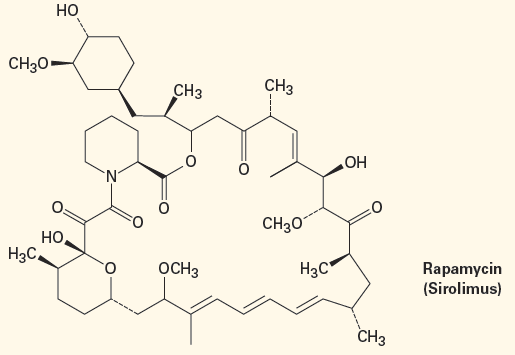


 علم الكيمياء
علم الكيمياء 
 الكيمياء التحليلية
الكيمياء التحليلية 
 الكيمياء الحياتية
الكيمياء الحياتية 
 الكيمياء العضوية
الكيمياء العضوية 
 الكيمياء الفيزيائية
الكيمياء الفيزيائية
 الكيمياء اللاعضوية
الكيمياء اللاعضوية 
 مواضيع اخرى في الكيمياء
مواضيع اخرى في الكيمياء
 الكيمياء الصناعية
الكيمياء الصناعية |
Read More
Date: 18-1-2016
Date: 4-10-2017
Date: 4-10-2017
|
Bioprospecting: Hunting for Natural Products
Most people know the names of the common classes of biomolecules—proteins, carbohydrates, lipids, and nucleic acids—but there are far more kinds of compounds in living organisms than just those four. All living organisms also contain a vast diversity of substances usually grouped under the heading natural products. The term natural product really refers to any naturally occurring substance but is generally taken to mean a so called secondary metabolite—a small molecule that is not essential to the growth and development of the producing organism and is not classified by structure.
It has been estimated that well over 300,000 secondary metabolites exist, and it’s thought that their primary function is to increase the likelihood of an organism’s survival by repelling or attracting other organisms. Alkaloids, such as morphine; antibiotics, such as erythromycin and the penicillins; and immunosuppressive agents, such as rapamycin (sirolimus) prescribed for liver transplant recipients, are examples.

Rapamycin, an immunosuppressant natural product used during organ transplants, was originally isolated from a soil sample found on Easter Island, or Rapa Nui, an island 2200 miles off the coast of Chile known for its giant Moai statues.
Where do these natural products come from, and how are they found? Although most chemists and biologists spend most of their time in the laboratory, a few spend their days scuba diving on South Pacific islands or trekking through the rainforests of South America and Southeast Asia at work as bioprospectors. Their job is to hunt for new and unusual natural products that might be useful as drugs.
As noted in the Chapter 6 Something Extra, more than half of all new drug candidates come either directly or indirectly from natural products. Morphine from the opium poppy, prostaglandin E1 from sheep prostate glands, erythromycin A from a Streptomyces erythreus bacterium cultured from a Philippine soil sample, and benzylpenicillin from the mold Penicillium notatum are examples. The immunosuppressive agent rapamycin, whose structure is shown on the previous page, was first isolated from a Streptomyces hygroscopicus bacterium found in a soil sample from Easter Island (Rapa Nui), located 2200 miles off the coast of Chile. With less than 1% of living organisms yet investigated, bioprospectors have a lot of work to do. But there is a race going on. Rainforests throughout the world are being destroyed at an alarming rate, causing many species of both plants and animals to become extinct before they can even be examined. Fortunately, the governments in many countries seem aware of the problem, but there is as yet no international treaty on biodiversity that could help preserve vanishing species.



|
|
|
|
تفوقت في الاختبار على الجميع.. فاكهة "خارقة" في عالم التغذية
|
|
|
|
|
|
|
أمين عام أوبك: النفط الخام والغاز الطبيعي "هبة من الله"
|
|
|
|
|
|
|
قسم شؤون المعارف ينظم دورة عن آليات عمل الفهارس الفنية للموسوعات والكتب لملاكاته
|
|
|